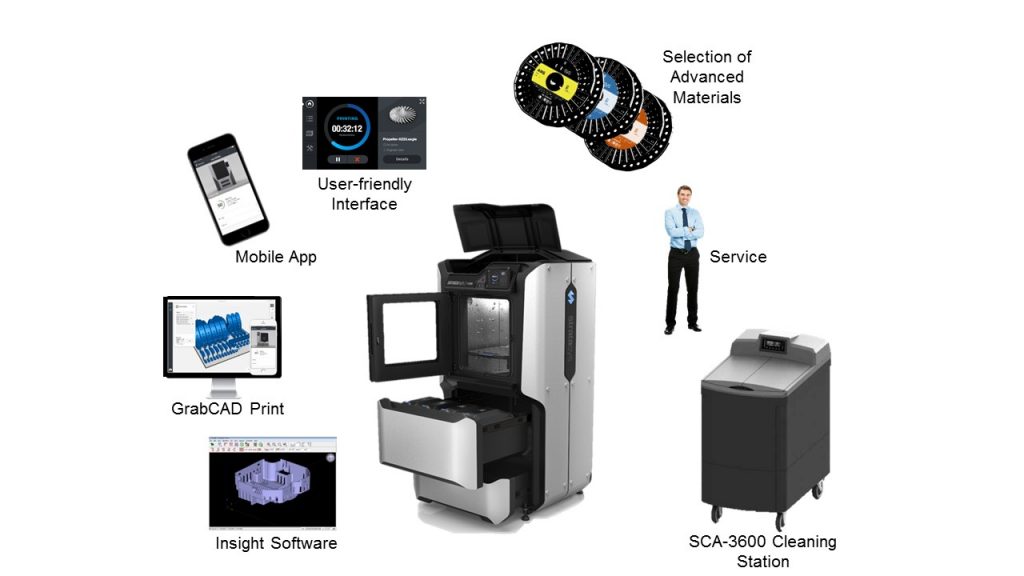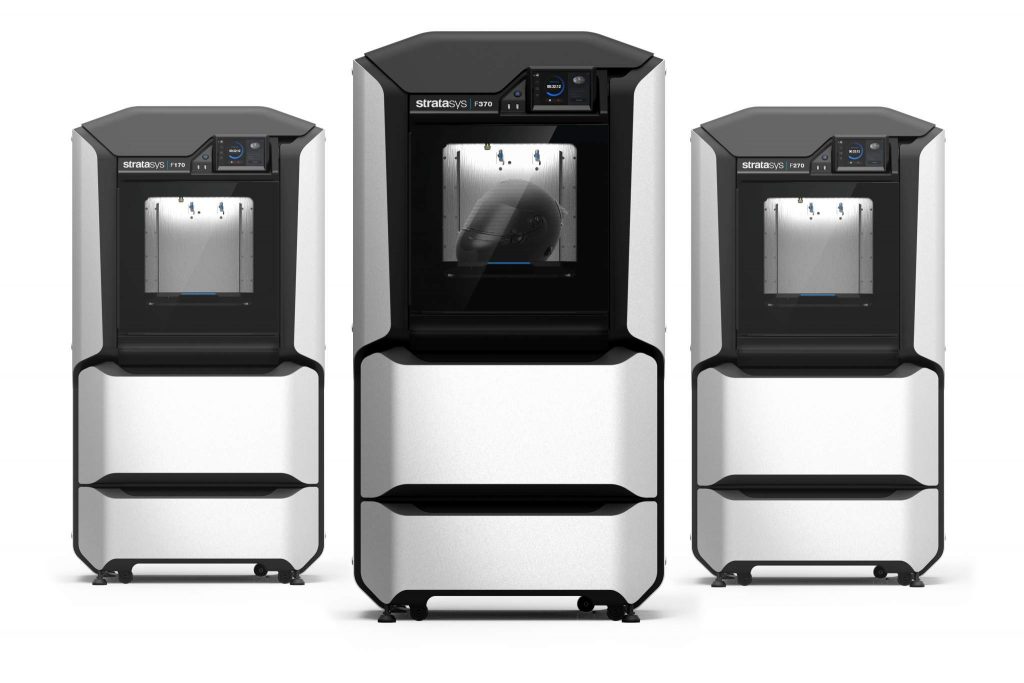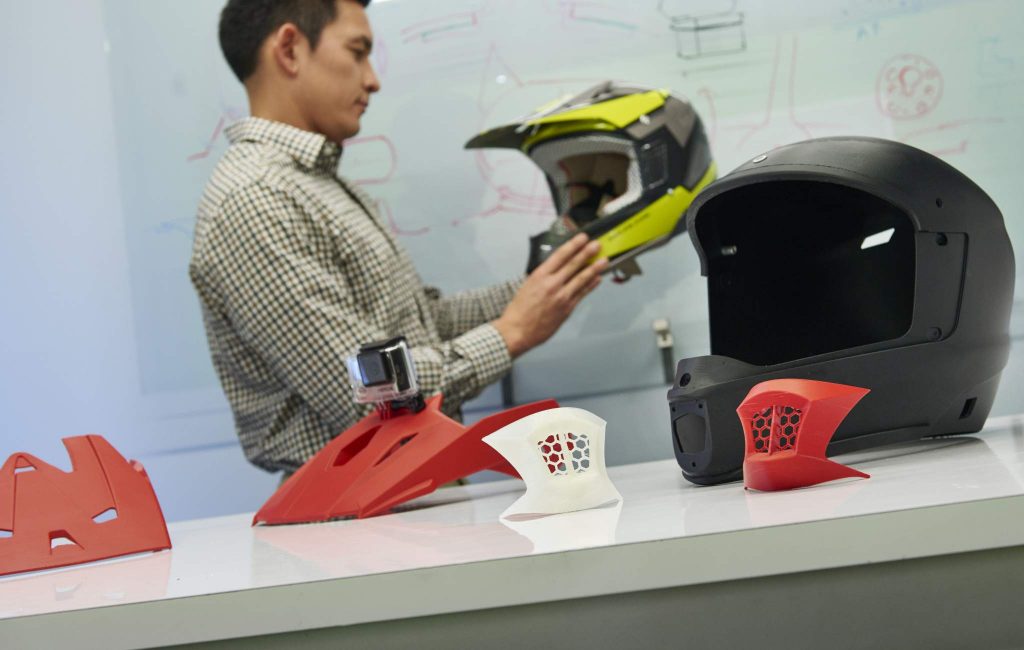Yesterday 3D Printing Industry took a first look at the new F123 series of 3D printers from Stratasys. Here we present a more detailed review featuring some of the technical details in these new machines and a first for the 3D printing company.
The F170, F270 and F370 occupy a space in Stratasys’ FDM portfolio above the uPrint SE Plus 3D printers, but below the Fortus 380mc. The 3D printers are pitched at workgroups tackling product design and development.
Stratasys have put their new F123 series of 3D printers through, “100,000 hours of reliability testing.” 3D Printing Industry understand that the machines are in the process of shipping and should begin to reach re-sellers in early to mid-March.
Although Stratasys have not yet confirmed an official price point, sources at the company tell us the F170 will be available at a price below $20,000.

15 new 3D printing patents
There are 15 new patents and patent applications in the F123 range of 3D printers, plus an existing 43 patents. While Stratasys have not given the precise nature of the 15 new patents included in the F123 3D printers, this is an impressive amount of IP. Looking at some recent patent filings for Stratasys shows that IP for Water dispersible polymer for use in additive manufacturing, Break-away support material for additive manufacturing, and several other filings were published in the past 12 months.
Inspecting the F123 series there are some visible changes in the design of the print head. According to the 3D printer manufacturer, Stratasys engineers went through “over 20 design iterations were created and 80 head housings 3D printed during the design development and verification stage.” Testing each iteration by traditional methods such as injection molding would have cost a minimum of $10,000 according to the company.
During the design verification process for the new range of FDM F123 3D printers more than 1,000 parts for a total of 15 components were 3D printed by the company.
Stratasys are keen to highlight that while the cost savings in development were important, security over the process was also paramount. By developing the 3D printers in-house the company was able to gain reassurance over this important element.

Stratasys F123 3D printing material choices
The F123 range of 3D printers offers a choice of PLA or engineering thermoplastics with greater durability such as ASA, ABS and PC-ABS. Working with these materials and the F123 series also allows the introduction of soluble supports to create 3D prints with geometries that would not be possible in a single material. Stratasys call this the QSR Soluble Support system, or Quick Support Release.
Not all materials can be used on each of the 3D printers. On the F170 and F270 PLA, ABS and ASA are available, while for the F370 3D printing with PC-ABS is possible.
The F123 series is the first Stratasys machine (if MakerBot is not included) to feature PLA as a material choice, an option that has raised a few eyebrows in the professional 3D printer market.
F123 3D printing speed
According to the currently available information, Stratasys have opted for servo motors rather than stepper motors for the F123 3D printers. The range also uses motion-control components like linear profiled rails with ball bearings, which are prefered by the company over sleeve bearings.
In terms of throughput, STL build speeds related to Dimension® & Fortus 250mc™ are given as 0.91 in³ /hr for the F123 Series of Stratasys 3D printers. Stratasys benchmarks for standard build mode are quoted as 49% faster than a Fortus 250mc, a figure that rises to 98% when the F123 series operates in PLA draft mode.
Enclosed build chamber and noise reduction
The F123 series features an enclosed, insulated build chamber with an auto-locking door. The range of 3D printers also have noise insulation that measures at 46 decibels.
Regarding temperature control in the build chamber, Stratasys are very proud of the oven air duct, a component designed to offer a “tightly controlled temperature profile within the build chamber.”
Much like aspects of the print heads, 3D printing was an integral stage of the design process. The 3D printer manufacturer points out that conducting thermal and mathematical analysis is part of the journey, but creating tangible models allows these specifications to be refined to a much further point than mathematical modelling alone permits.
Stratasys recognizes that a substantial amount of development has occured in the FDM 3D printer market and have issued a warning about lower priced 3D printing option. Buyers of cheaper 3D printers should be wary of the “seduction of low-priced equipment [that] will often limit your long-term prototyping capabilities, growth plans and day-to-day equipment uptime.”
Temperature control within the F123 3D printing “oven” is also designed to prevent the curling of 3D printed components. Heated build chambers can be advantageous in this respect, especially when 3D printing longer or flatter parts.
Regarding the build chamber Stratasys add that it offers “tight temperature uniformity across the build plane, with no dead spots”
Exterior construction
In the press release accompanying the F123 series, much was made of the collaboration between the BMW design team and Stratasys to construct the exterior. The 3D printer has a 1/8” aluminum exterior with slot & tab construction, tempered glass and thermal and noise insulation.

Other specifications and features of the Stratasys F123 3D printer range
The 3D printers are all Wi-Fi-ready, but files can be printed via USB or Ethernet cable. The 3D printers have a built-in camera that can be used for remote monitoring via an app. Further user interaction is possible via a touchscreen interface that offers support for 10 languages.
Stratasys have made much of the dual operation modes. The F123 3D printers offer a “Fast Draft print mode” which runs at twice the speed of the standard FDM print operation while typically using only one-third the material. In this mode 3D prints using PLA can be conducted, before making the part in one of the other material options.
The 3D printers also feature, self positioning filament spools that are intended to save the operator time.
We’ll be bringing you more details about the F123D range of 3D printers as we have it. Sign up to our newsletter and follow us on social media if you’d like to be first with all the latest news about 3D printing.
Stratasys F123 build chamber and material options
Stratasys F170™
10”x10”x10”
254 x 254 x 254 mm
PLA, ASA, and ABS
Stratasys F270™
(44% bigger than F170)
12”x10”x12”
305 x 254 x 305 mm
PLA, ASA, and ABS
Stratasys F370™
(96% bigger than F170)
14”x10”x14”
356 x 254 x 356 mm
PLA, ASA, ABS and PC-ABS



